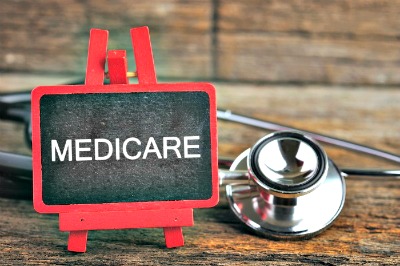The Ways Medicare is Changing for 2017
 Medicare rules and costs change each year so it pays to keep up-to-date with what’s new with the nation’s senior health insurance program, whether you’re enrolling for the first time or already enrolled. The changes in Medicare for 2017 may be subtle but will still affect your pocketbook.
Medicare rules and costs change each year so it pays to keep up-to-date with what’s new with the nation’s senior health insurance program, whether you’re enrolling for the first time or already enrolled. The changes in Medicare for 2017 may be subtle but will still affect your pocketbook.
You qualify for Medicare when you turn 65, or if you have certain disabilities or end-stage renal disease.
“The Medicare program helps countless older adults and people with disabilities, and their families, achieve health and economic security,” says Joe Baker, president of the Medicare Rights Center, a nonprofit consumer service organization.
CHECK OUT: New to Medicare? Here’s What You Need to Know
Changes probably most important to enrollees for 2017 will be slight increases to premiums and higher deductibles.
It doesn’t appear that Social Security recipients will be receiving a cost of living adjustment, or COLA, this year. Without that, your monthly Social Security check will remain the same.
The federal government uses the rate of inflation to determine an increase in benefits, but with inflation remaining relatively flat the odds are in favor of no changes.
If an increase on your check does happen, however, expect it to be a small one.
Why changes in Medicare affect Social Security checks
So what does that have to do with your Medicare costs?
Well, Medicare Part A does not require a participant to contribute any of his or her own money. However, the cost of Part B usually is deducted from a participant’s Social Security check.
Without a COLA in 2017 most current recipients will pay the same monthly premium for Part B that they currently do, which is $104.90.
New Medicare Part B enrollees can expect to pay $149 a month in premiums.
RELATED: Can Parents Be Claimed as Dependents on Health Insurance?
High income enrollees (individuals making more than $214,000 annually or $428,000 a couple) can expect premiums to increase from $389 a month to $467.20.
Part B’s annual deductible also is expected to rise, which means more money coming out of the enrollee’s pocket. It’s currently $166 and that is expected to jump to $204 in the coming year.
After meeting that deductible you can expect Medicare to pick up about 80 percent of the costs associated with Part B.
Finally, enrollees can expect an increase in their drug coverage, which falls under Medicare Part D. The average basic premium for a Medicare Part D prescription drug plan in 2017 is projected to remain relatively stable at an estimated $34 per month.
This represents an increase of approximately $1.50 over the actual average premium of $32.56 in 2016.
“Stable Medicare prescription drug plan premiums help seniors and people with disabilities afford their prescription drugs,” says Andy Slavitt, acting administrator of the Centers for Medicare & Medicaid Services
The Part D deductible, which is $360, should go up to $400 in 2017.
How supplemental insurance works with Medicare
What can you do to offset these rising costs? Obtaining supplemental insurance to help fill in the gaps is one solution. Supplemental insurance, also called Medigap, is provided by private insurance companies.
With Medigap you will have a monthly premium, in addition to the Part B premium that you pay to Medicare. These policies only cover one person, so if you and your spouse both want Medigap coverage, you’ll need to buy separate policies.
You can buy a Medigap policy from any insurance company that’s licensed in your state to sell one.
Any standardized Medigap policy is guaranteed renewable even if you have health problems. This means the insurance company can’t cancel your Medigap policy as long as you pay the premium.
You can expect more changes in the coming years as the Medicare system works to improve care and embrace innovations.
“People with Medicare and taxpayers deserve a Medicare program that pays for high-value, innovative health care,” Baker says.
